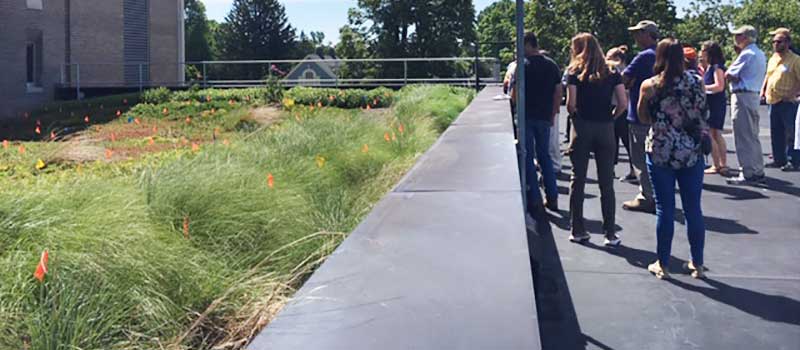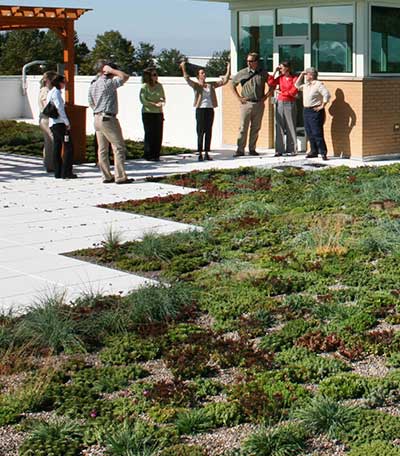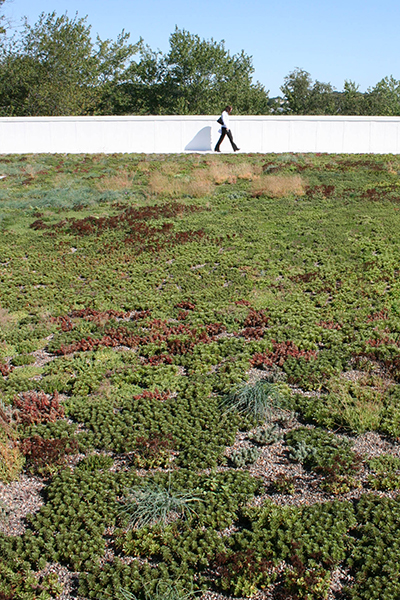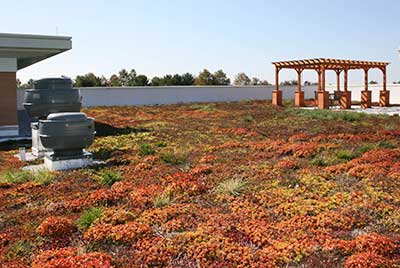A green roof at the Dansko building in West Grove.
Portions of this vegetated roof are accessible to the building's users.
How it Works
Green roofs typically include waterproofing and drainage materials and an engineered growing media that supports plant growth. Green roofs capture and temporarily store stormwater in the plants and in the growing media before the stormwater flows into the drainage system. A portion of the captured stormwater evaporates or is taken up by plants, which helps reduce peak runoff volumes, runoff rates, and pollutants. These planting areas can also reduce the thermal load under the roof, the "heat island" effect can be reduced, and these roofs can help protect the underlying roof membranes from ultraviolet radiation and puncture damage.
Benefits
Energy Conservation
Green roofs reduce stormwater runoff and stream sedimentation, and can improve a building's insulation.
Efficient Use of Land
Green roofs can free more area on the site for open space or development because ground-level stormwater management areas are relocated onto roof areas.
Lowers Pollution
Green roofs reduce air pollution and lower local temperatures.
Environmental Protection
Green roof policies can help protect sensitive environmental areas by removing pollutants.
A green roof can manage stormwater and be visually appealing.
A variety of different plant materials can be used on a green roof.
Get Started
Green roofs are often used to help reduce stormwater flow from buildings. Municipalities can encourage the use of green roofs by allowing them to count towards meeting open space area requirements, especially if they are accessible to people who use the building. The use of green roofs can be further encouraged by offering zoning bonuses for additional development density, taller building heights, and increased lot coverage as incentives. Subdivision and land development ordinances should also be revised to ensure that green roof areas will be applied towards meeting a site’s stormwater management requirements.
Municipalities can also encourage builders to design to the highest practical Leadership in Energy and Environmental Design (LEED) certification; LEED is a green building certification program developed by the U.S. Green Building Council. Green roofs can be used towards attaining a LEED certification. While municipalities cannot mandate the achievement of a particular LEED certification because verification often occurs after construction is complete (especially for the measurement of actual energy usage), incentives such as increased floor area or building height can be offered if the LEED point system is followed.
Considerations
The use of green roof policies, construction practices, and techniques can meet some barriers:
Perception of High Price
Some green roofs have higher initial costs, but these costs can be offset because the green roof materials can help preserve the lifespan of the roofing materials below it.
Lack of Expertise
Installing and maintaining green roofs can require specific skills and knowledge, but more builders are acquiring such skills as more green roofs are built.
Regulatory Inflexibility
Building codes are established at the state level, and local municipalities have limited abilities to require specific green construction practices and techniques unless these practices are clearly reflected in the Pennsylvania Uniform Construction Code. However, municipalities can still encourage their use through zoning bonuses discussed above.

Examples
Green roofs can be used to improve a building’s potential LEED score, as noted above. The Borough of West Chester's Zoning Ordinance permits taller buildings to be constructed if they are designed to a rating of “LEED-NC certified” or higher.

The Francis Harvey Green Library at West Chester University includes a green roof. The green roof not only captures storm water runoff, but is used to undertake research projects by WCU faculty and staff and provides a unique view out of the second floor library windows. West Chester University offers an extensive sustainability program, including education and research, planning for carbon neutrality, and sustainability-focused courses.
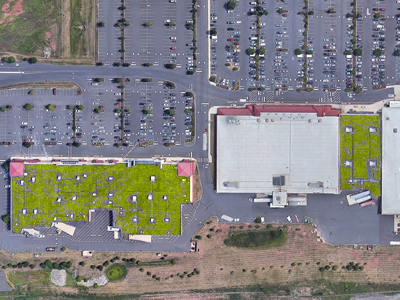
The Target Shopping Center located at the southeast corner of South Township Line Road and East Ridge Pike in Trappe, Montgomery County, includes several buildings with green roofs.
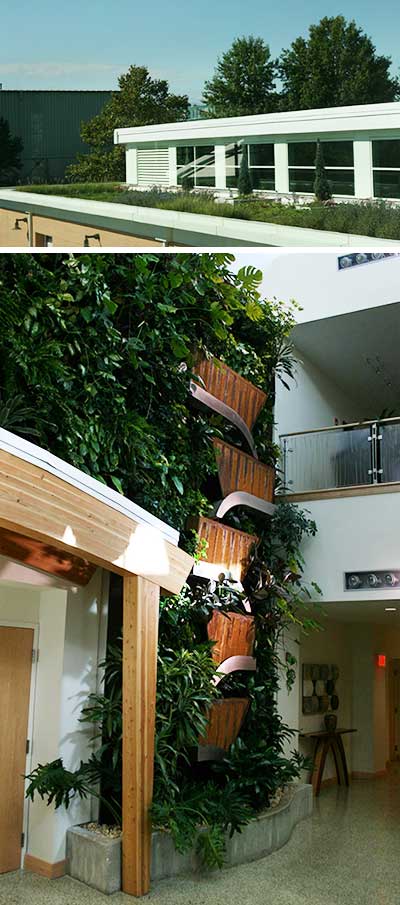
The Dansko footwear company's headquarters in West Grove, PA includes a green roof that was built in 2007. In addition to the green roof, the site includes a living green wall, low-waste, efficient construction (LEED certified) and rainwater harvesting.


